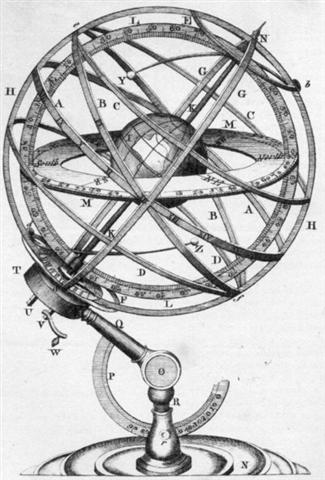|
6. Allen: "Merak, or Mirak, is from Al Marākk, the Loin (of the Bear); but Chilmead said Miraë, and Scaliger, Mizar. It may have been known by the Greeks as Helike, one of their names for the whole. The Chinese called it Tien Seuen, an Armillary Sphere, and the Hindus, Pulaha, one of their Rishis." Perhaps the G text is a 2-dimensional representation of an armillary sphere:
The complexity of its structure, the attention to detail, the evident connection with the positions of important stars, and the navigating skills of the Polyensian people, - all makes it plausible. "Near the Gulf of Corinth, the ancient city of Helike fits the Atlantis profile as it was a flourishing city struck down in its prime by an earthquake in 373 BC. The city state was the centre of a cult of Poseidon, second only in importance to the Oracle at Delphi. Generations of fishermen in the Gulf have told of snagging their nets on statues of an apparently wrathful Poseidon." (Wikipedia) How could the Greeks have had the same name for Ursa Major - a constellation which never descends - and their important city Helike which disappeared below the waters? Perhaps its disappearance inspired the name for Ursa Major - the front part of the constellation looks as if it is immersed and its stars are 'bearily' visible. By the way, it was an earthquake which made Helike sink under water. In Polynesia the god of earthquakes was Rua-moko: ... The summer wife of Rehua [Antares] was the star Ruhi-te-rangi, but it is also said that he mated with Rigel ... In another old story Rehua mated with Puanga, Rigel, and their offspring were the clematis and another plant which were born in Mahuru, spring (August). They still suckle their mother during August and herald the coming of spring. Their birth was facilitated by Rua-moko, god of earthquakes, who marks the change of seasons. The idea of Rua-moko as connected with the change of seasons fits well with my suggestion of 'land' (in the sky) sinking low ('high tide') and then rising up again ('low tide'). In high summer 'land' has reached its maximum. Observations of how islands in the Pacific tend to disappear below the waves in connection with earthquakes and later emerge anew by volcanic forces would have been the basis for such thoughts. |
